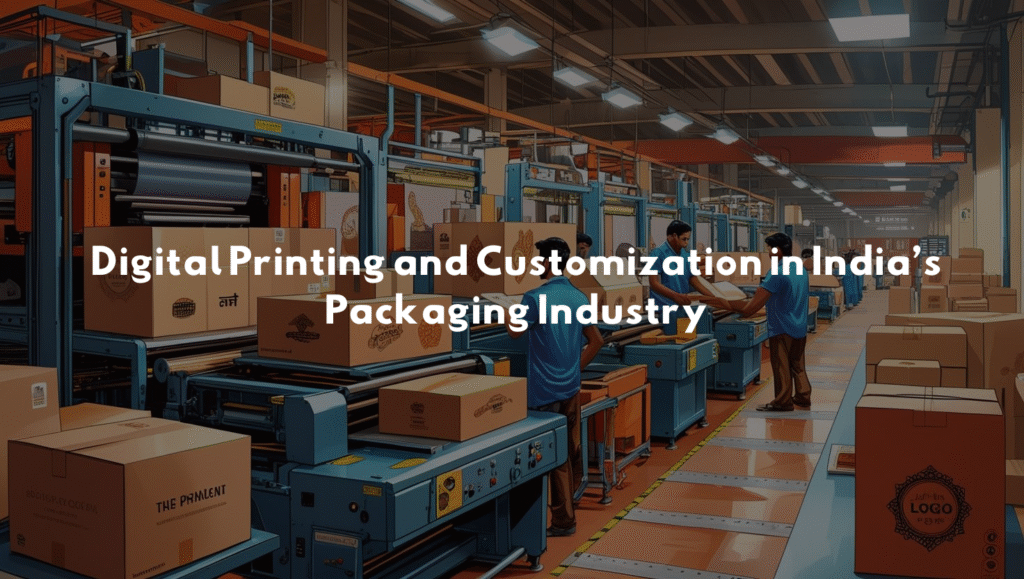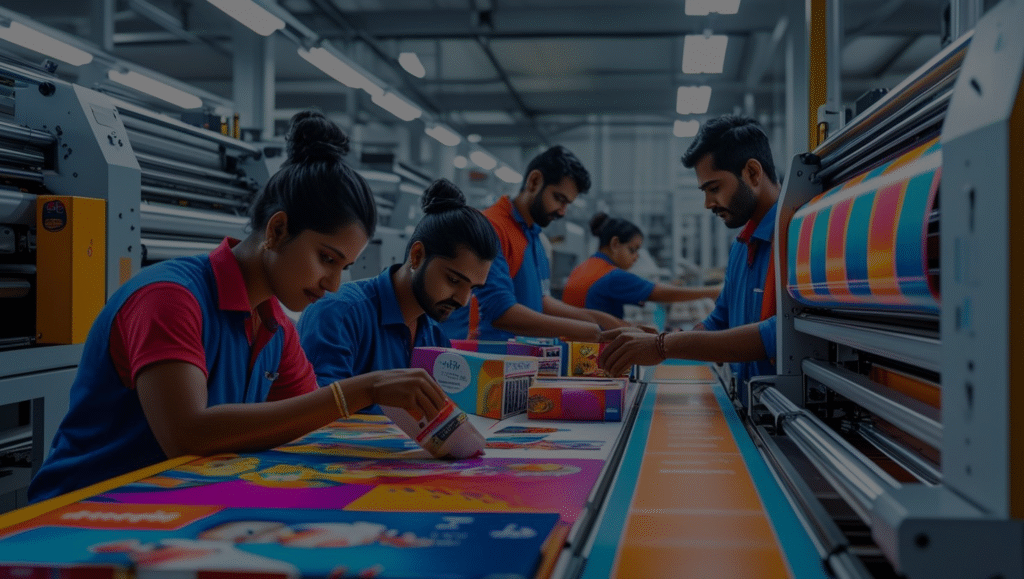
With India’s printing sector charging towards a projected USD 30 billion valuation by the year 2030, at a 5.8% CAGR growth, digital presses are transforming packaging and on-demand media using short-run, customized, and wastage-free applications.
Led by the e-commerce revolution that contributes 20% to India’s USD 1.5 trillion retail market and increasing interest in customized products, digital printing is revolutionizing the way brands interact with consumers.
Though these technologies complement sustainability objectives and India’s National Green Mission, skill shortages and prohibitive costs hamper extensive adoption, especially for small players.
Digital presses, based on inkjet and toner-based technologies, allow quick, economical printing of small quantities in batches, obviating the necessity for huge print runs and the wastage it entails.
With e-commerce packaging expanding at 20% a year, spurred by the likes of Amazon and Flipkart, customized printing is a game-changer. Brands are employing digital presses for custom packaging, ranging from customized labels to limited-series prints, increased consumer interaction.
Urban Indians have been found to have a 65% preference for brands with customized packaging by a 2024 Nielsen survey, driving FMCG and logistics demand.
Digital printing extends flexibility and efficiency in e-commerce. Short-run is capable of producing 100-1,000 units at no setup expense, reducing inventory waste by 30%, according to a 2024 FICCI report. HP Indigo’s digital presses, implemented by printers such as Manipal Technologies, support variable data printing (VDP), which can be used to print distinct QR codes or patterns on every package, improving traceability and promotion. Nestlé India, for example, employed VDP in personalized KitKat wrappers that improved sales by 12% during festivals.
Zero-waste printing, obtained through accurate ink deposit, lowers material consumption by 25%, conforming to the Plastic Waste Management Rules, 2016, as well as Extended Producer Responsibility (EPR) regulations.
On-demand media such as books, brochures, and promotional materials are also doing well. Xerox’s Iridesse, digital presses, create high-quality, short-run products with no plate-making, reducing lead times by 50%.
Their use in Delhi’s printing hubs supports India’s USD 3 billion publishing market, where print-on-demand platforms like Notion Press cater to niche authors, printing as few as 10 copies. A 2024 CII report noted that digital printing cuts overproduction waste by 40%, supporting sustainability goals. In packaging, water-based inks on digital presses, adopted by UFlex, reduce emissions by 90%, meeting BIS and REACH standards.
Innovations are enhancing capabilities. Hybrid presses, which integrate digital and offset technologies, provide affordable tailoring for medium-size runs, while DIC India’s hybrid presses increase efficiency by 20%.
Inks based on nanocellulose, which have been researched by IIT Bombay, enhance recyclable substrate adhesion, enabling circular packaging. During a recent industry exhibition, Canon introduced AI-based presses that optimize ink consumption, reducing cost by 15%.

These technologies complement India’s vision of lowering industrial emissions by 45% by 2030, according to the National Green Mission, and respond to the 8% growth in e-commerce packaging year-on-year.
Efforts by the government are boosting progress. The Production-Linked Incentive (PLI) plan, with Rs. 50,000 crore being given to the National Research Foundation (NRF), encourages R&D on digital printing. The Raising and Accelerating MSME Performance (RAMP) program supports small companies, which create 40% of printing production, in the use of cutting-edge presses.
The Skill India Digital Hub has certified 2 million staff in digital technologies since 2023, enhancing implementation. PM Gati Shakti enhances supply chain productivity, ensuring timely supply of printing materials.
Challenges remain, nonetheless. Digital presses are 25-35% more expensive than offset systems, with entry-level versions costing over Rs. 50 lakh, which discourages MSMEs, with only 15% of them using them, according to a 2024 SIDBI report. Shortages of skills, with only 5% of the workforce trained in digital press operations, according to Nasscom, restrict innovation. Infrastructural challenges, such as unpredictable power in Tier 2 cities, halt production, costing SMEs Rs. 1-2 lakh every month, according to industry reports.
Limited awareness among smaller e-commerce vendors, prioritizing cost over customization, slows adoption. Regulatory delays, with patent approvals taking 4-6 years versus China’s 2 years, hinder new technology rollouts.
Experts suggest focused interventions. Subsidies under the Technology Upgradation Scheme can cover costs. Scaling Skill India’s digital printing training can fill skill gaps. Enhancing 5G connectivity and power stability, as envisaged under PM Gati Shakti, will enable press operations.
Public-private partnerships with IITs can ramp up R&D for low-cost solutions. CII-led public outreach campaigns can raise demand among small vendors, paving the way for inclusive growth.
Digital printing is transforming India’s on-demand media and packaging, with customization and sustainability in a digital age. With a USD 3 billion ink and print market estimated by 2030, waste-free short-run solutions are the solution to capturing e-commerce growth.
By overcoming cost, skills, and infrastructure hurdles, Indian businesses can drive the world toward mass customization and sustainable printing, creating a dynamic future for brands and consumers.
